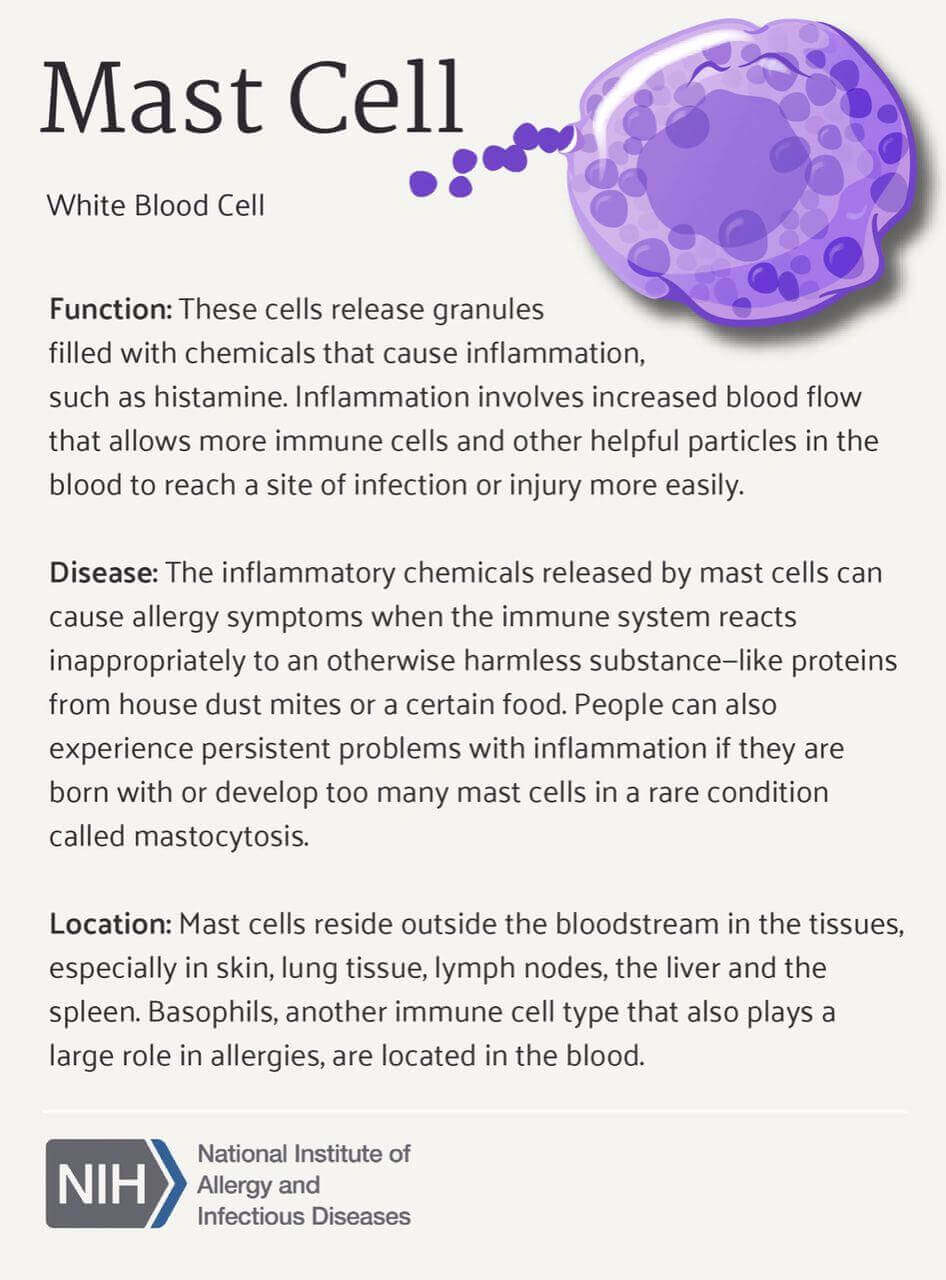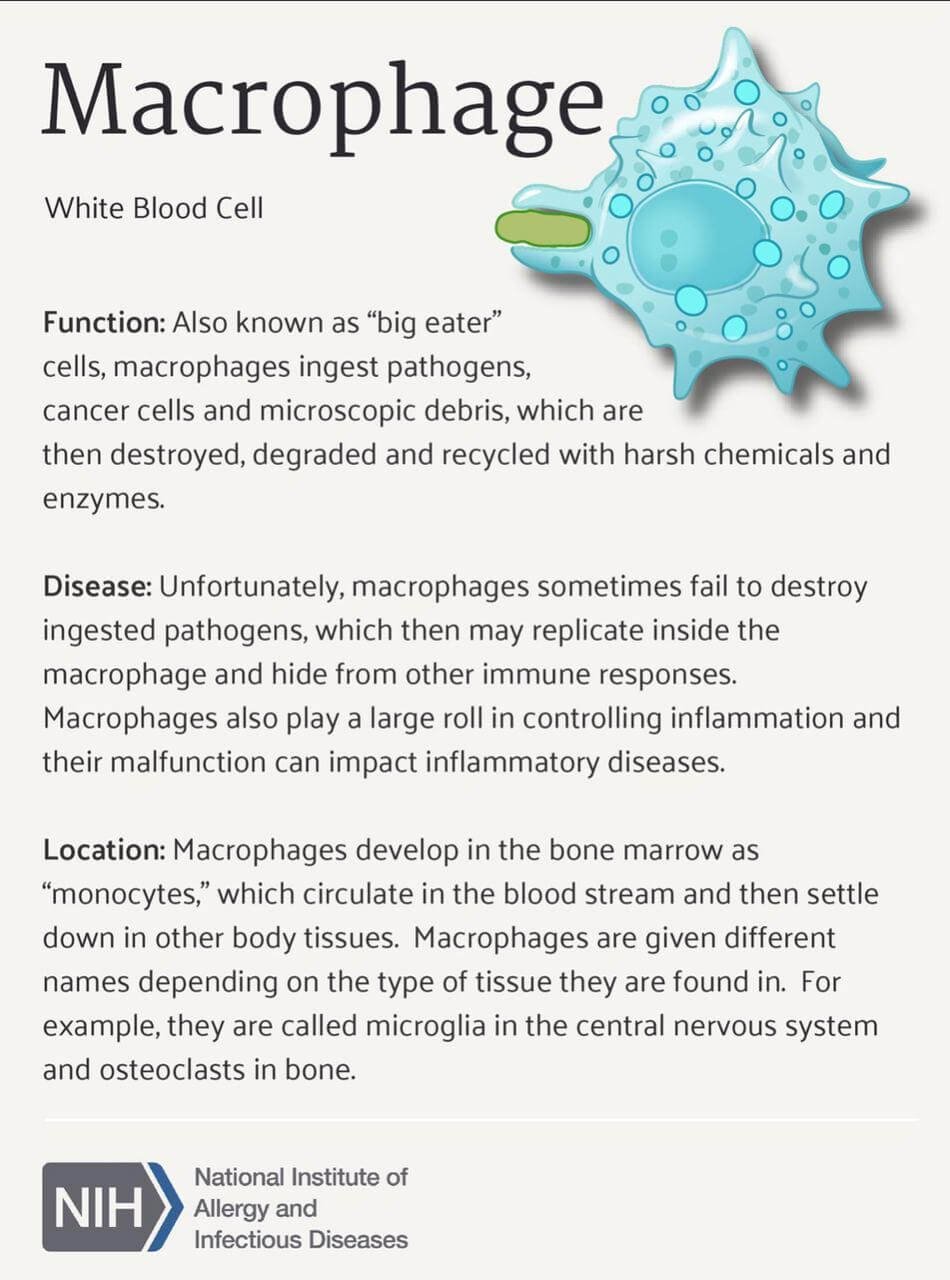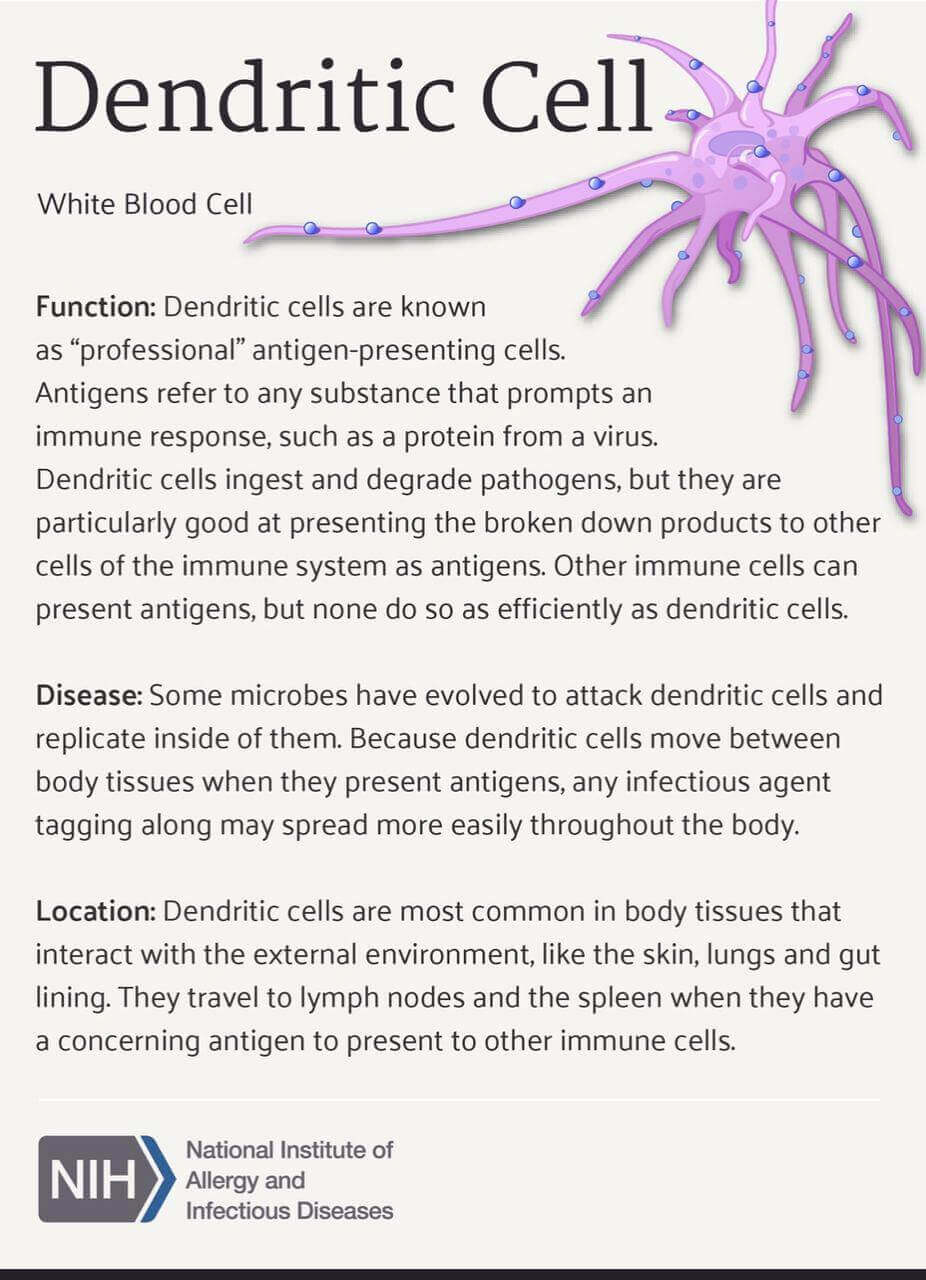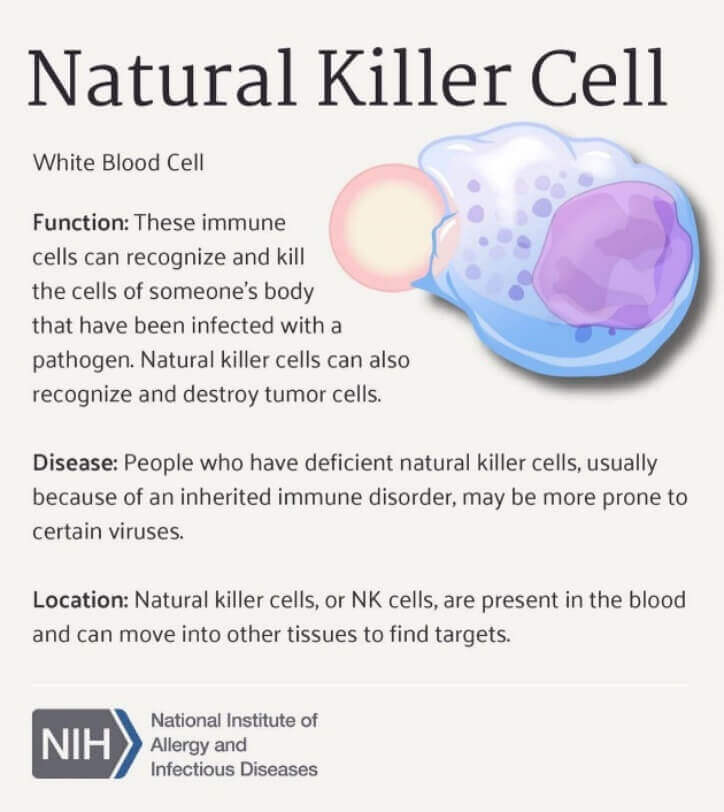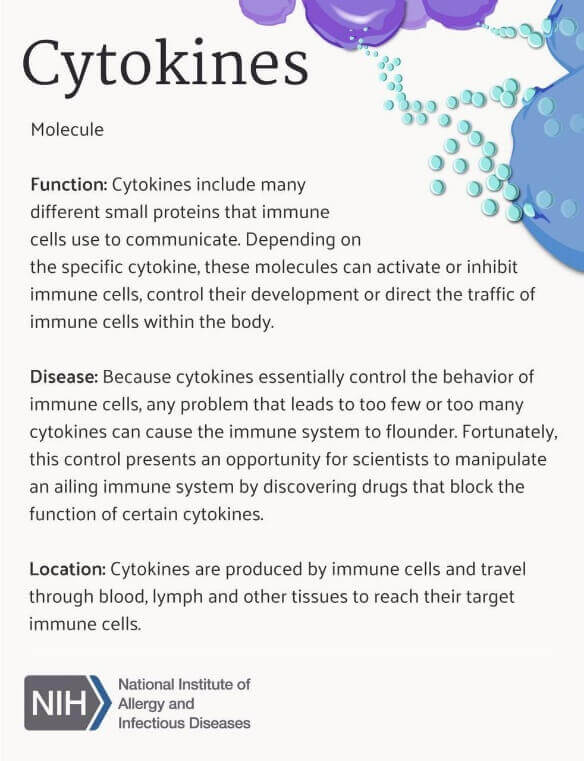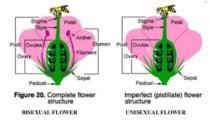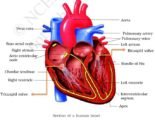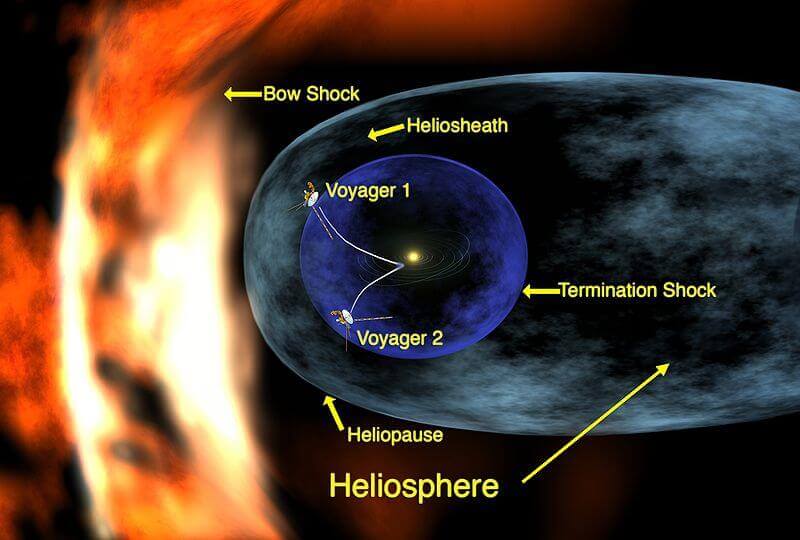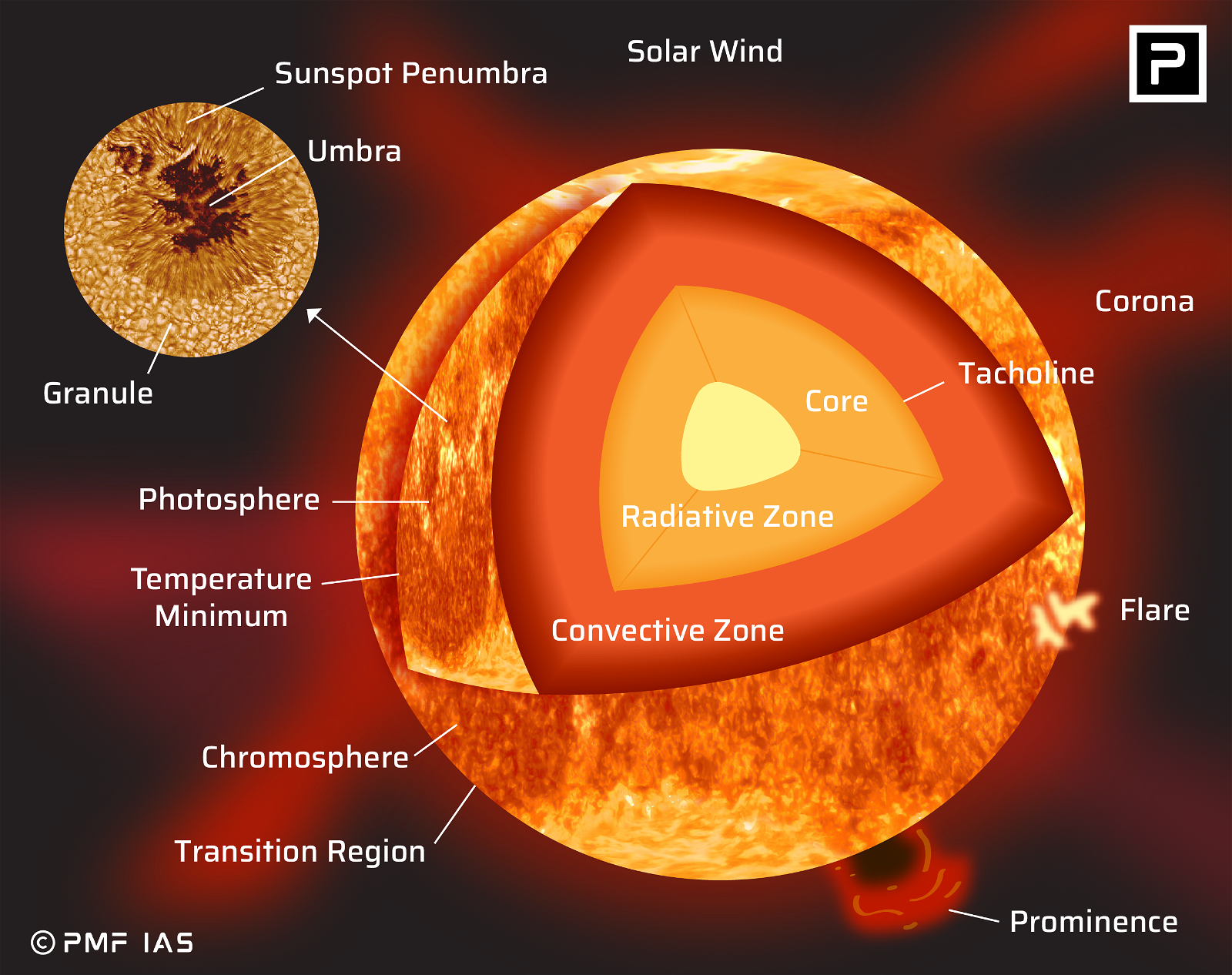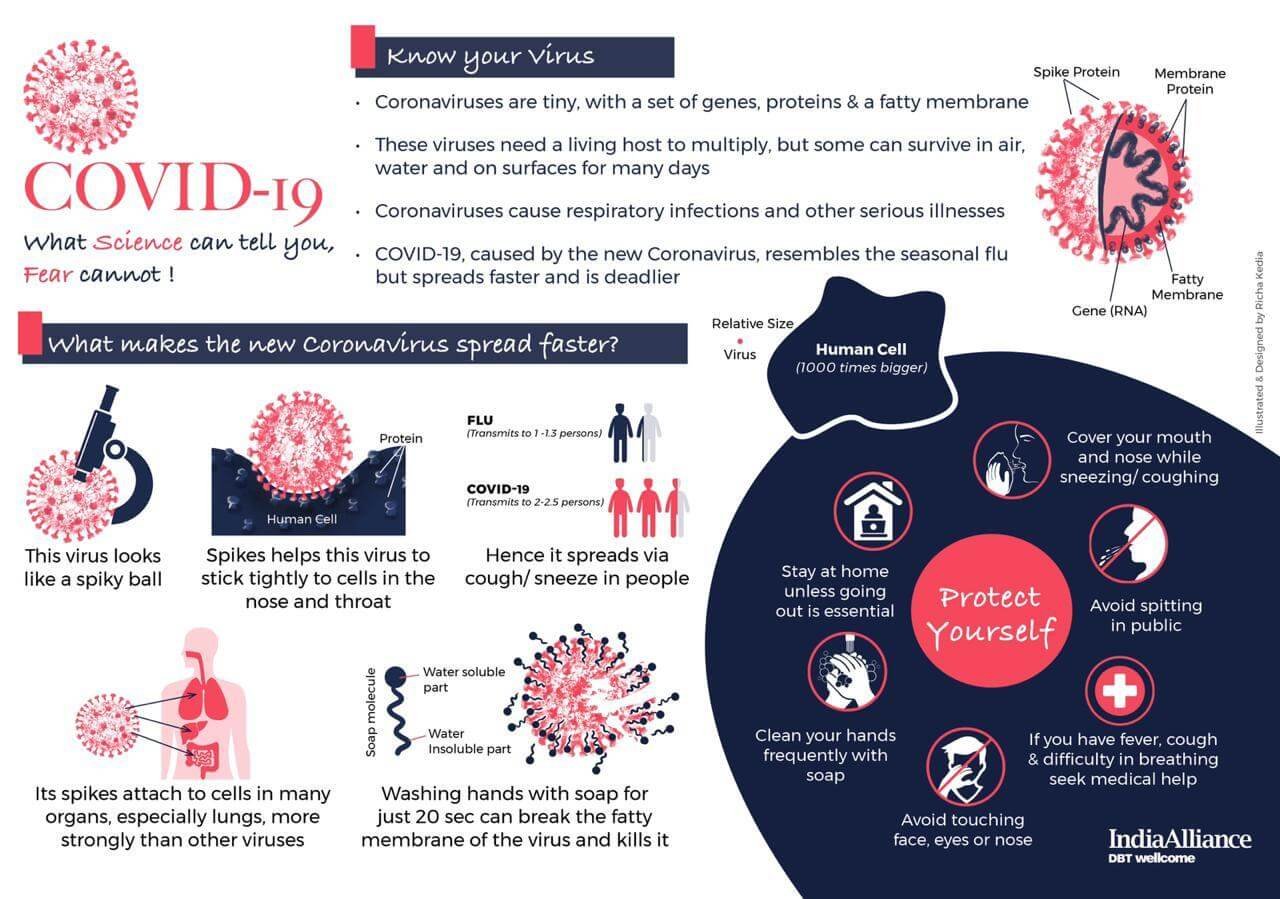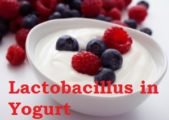
Immune System, T– Cells & Coronavirus, Cytokine storm
Subscribe to Never Miss an Important Update! Assured Discounts on New Products!
Must Join PMF IAS Telegram Channel & PMF IAS History Telegram Channel
Coronavirus disease 2019 (COVID-19)
- Virus, Difference Between Virus & Bacteria, DNA & RNA Viruses
- Coronavirus, Coronavirus Disease 2019 (COVID-19 or 2019-nCoV)
- Immune System, T– Cells & Coronavirus, Cytokine storm <===
- Covid-19 Tests: RT-PCR, Rapid Antigen Test & Serological Test
- Proposed Vaccines, Treatments in the Context of COVID-19
Immune System in the Body
- The Human Immune System consists of lymphoid organs, tissues, cells & soluble molecules like antibodies.

- The immune system recognizes foreign antigens, responds to these & remembers them.
- The immune system also plays an important role in allergic reactions, auto-immune diseases & organ transplantation.
- Lymphoid Organs: These are the organs where the origin and/or maturation & proliferation of Lymphocytes.
- The primary lymphoid organs are bone marrow & thymus where immature lymphocytes differentiate into antigen-sensitive lymphocytes.
- The bone marrow is the main lymphoid organ where all blood cells including lymphocytes are produced.
- The thymus is a lobed organ located near the heart & beneath the breastbone.
- The thymus is quite large at the time of birth but keeps reducing in size with age & by the time puberty is attained it reduces to a very small size.
- Both bone-marrow & thymus provide micro-environments for the development & maturation of T-lymphocytes.
- After maturation, the lymphocytes migrate to secondary lymphoid organs like spleen, lymph nodes, tonsils, Peyer’s patches of small intestine & appendix.
- The secondary lymphoid organs provide the sites for interaction of lymphocytes with the antigen, which then proliferate to become effector cells.
- The spleen is a large bean-shaped organ. It mainly contains lymphocytes & phagocytes (cells that protect the body by ingesting harmful foreign particles, bacteria, and dead or dying cells).
- It acts as a filter of the blood by trapping blood-borne micro-organisms.
- Spleen also has a large reservoir of erythrocytes (an RBC that contains the pigment haemoglobin).
- The lymph nodes are small solid structures located at different points along with the lymphatic system.
- Lymph nodes serve to trap the micro-organisms or other antigens, which happen to get into the lymph & tissue fluid.
- Antigens trapped in the lymph nodes are responsible for the activation of lymphocytes present there & cause the immune response.
- There is lymphoid tissue also located within the lining of the major tracts (respiratory, digestive & urogenital tracts) called mucosal-associated lymphoid tissue (MALT).
- It constitutes about 50 per cent of the lymphoid tissue in the human body.
Innate Immunity
- Innate immunity is a non-specific type of defence, that is present at the time of birth.
- Innate immunity is accomplished by providing different types of barriers to the entry of foreign agents.
- Innate immunity consists of four types of barriers. These are: –
- Physical Barriers: Skin on our body is the main barrier which prevents entry of the micro-organisms. Mucus coating of the epithelium lining the respiratory, gastrointestinal & urogenital tracts also helps in trapping microbes entering our body.
- Physiological Barriers: Acid in the stomach, saliva in the mouth, tears from eyes-all prevent microbial growth.
- Cellular Barriers: Certain types of leukocytes (WBC) like polymorpho-nuclear leukocytes (PMNL-neutrophils) & monocytes & natural killer (a type of lymphocytes) in the blood, as well as macrophages (cells that recognize, engulf and destroy target cells) in tissues, can phagocytose (destroy microbes).
- Cytokine Barriers: Virus-infected cells secrete proteins called interferons which protect non-infected cells from further viral infection.
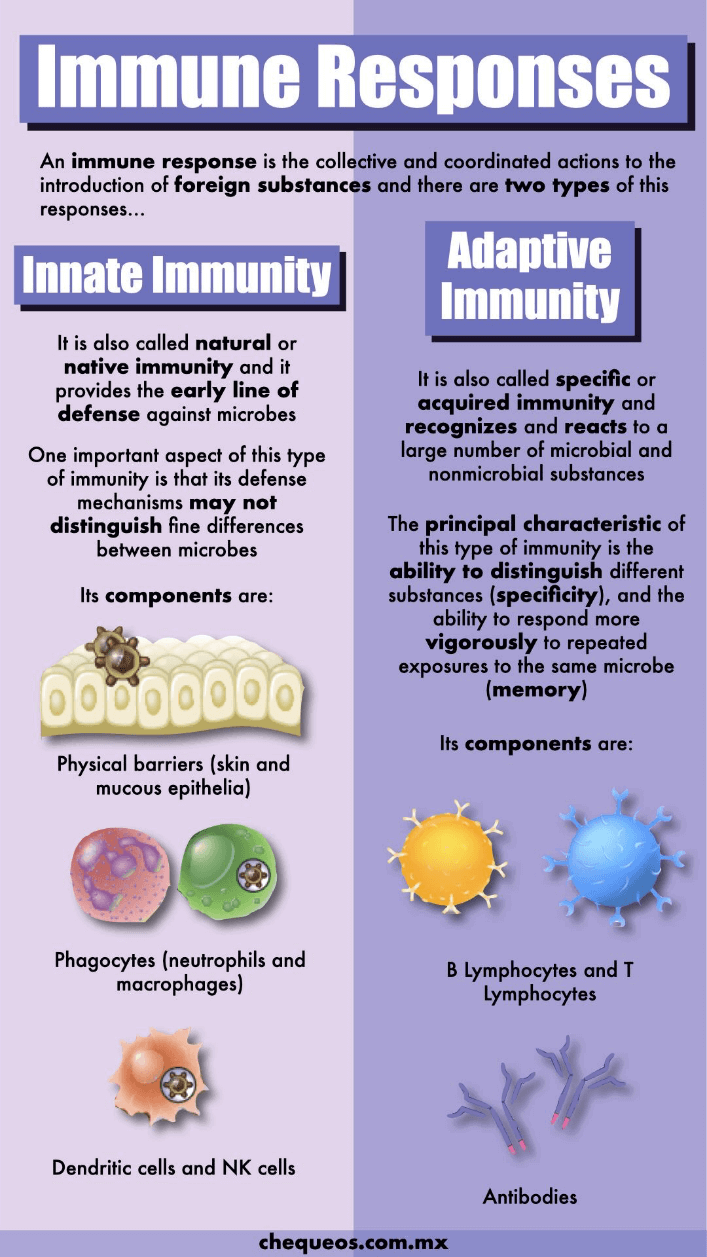
Acquired Immunity
- Acquired immunity is pathogen-specific. It is characterized by memory.
- This means that our body when it encounters a pathogen for the first time produces a response called primary response which is of low intensity.
- Subsequent encounter with the same pathogen elicits a highly intensified secondary or anamnestic response.
- The primary & secondary immune responses are carried out with the help of two special types of lymphocytes present in our blood, i.e., B-lymphocytes & T-lymphocytes.
- B-lymphocytes produce an army of proteins in response to pathogens into our blood to fight with them.
- These proteins are called Antibodies (a blood protein produced by the body in response to & counteracting an antigen).
- The T-cells themselves do not secrete antibodies but help B cells produce them.
- Each antibody molecule has four peptide chains, two small called light chains & two longer called heavy chains. Hence, an antibody is represented as H2L2.
- Different types of antibodies are produced in our body. IgA, IgM, IgE, IgG are some of them.
- Because these antibodies are found in the blood, the response is also called as humoral immune response.
- This is one of the two types of our acquired immune response – antibody-mediated.
- The second type is called cell-mediated immune response or cell-mediated immunity (CMI).
- The T-lymphocytes mediate CMI.
- Very often, when some human organs like heart, eye, liver, kidney fail to function satisfactorily, transplantation is the only remedy to enable the patient to live a normal life.
- Then a search begins – to find a suitable donor.
- Grafts from just any source – an animal, another primate, or any human beings cannot be made since the grafts would be rejected sooner or later.
- Tissue matching, blood group matching is essential before undertaking any graft/transplant & even after this the patient has to take Immuno-suppressants all his/her life.
- The body is able to differentiate ‘self’ & ‘nonself’ & the cell-mediated immune response is responsible for graft rejection.
Active & Passive Immunity
- When a host is exposed to antigens (a substance which the body recognizes as alien & which induces an immune response), which may be in the form of living or dead microbes or other proteins, antibodies are produced in the host body. This type of immunity is called active immunity.
- Active immunity is slow & takes time to give its full effective response.
- Injecting the microbes deliberately during immunization (Vaccination) or infectious organisms gaining access into the body during natural infection induce active immunity.
- When ready-made antibodies are directly given to protect the body against foreign agents, it is called passive immunity.
- Do you know why mother’s milk is considered very essential for the newborn infant?
- The yellowish fluid colostrum secreted by the mother during the initial days of lactation has abundant antibodies (IgA) to protect the infant.
- The foetus also receives some antibodies from their mother, through the placenta during pregnancy.
- These are some examples of passive immunity.
Auto Immunity
- Higher vertebrates can distinguish foreign molecules as well as foreign organisms.
- Sometimes, due to genetic & other unknown reasons, the body attacks self-cells.
- This results in damage to the body & are called auto-immune disease.
- Rheumatoid arthritis which affects many people in our society is an auto-immune disease.
What are T–Cells?
- T–cells are a type of white blood cell that works with macrophages.
- Unlike macrophages that can attack any invading cell, each T–cell can fight only one type of virus.
- You might think this means macrophages are stronger than T–cells, but they aren’t.
- There are two types of T–cells in your body: Helper T–cells & Killer T–cells.
- Killer T–cells do the work of destroying the infected cells.
- The Helper T–cells coordinate the attack.
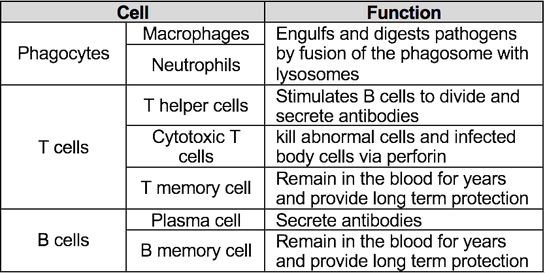
T– Cell Functions & Use
- The role of T cells is slightly modified throughout the human lifetime.
- In infancy, naïve T cells are critical for developing immunity towards common pathogens or antigens.
- In adulthood, when fewer novel antigens are encountered, they function mainly to maintain homeostasis & immunoregulation of repeat or chronically encountered antigens.
- Later in life, the functionality of T cells decreases, which adds to the dysregulation of the immune system & associated pathologies.
- T cells are used for other aspects of adaptive immunity too.
- This includes responses to allergens & tumours.
- They can also be responsible for inflammatory or autoimmune diseases.
T– Cells & COVID–19
- Because the clearing of a virus depends on an effective immune response, T cells have again come into focus following the COVID–19 pandemic.
- Initial studies indicate that there is a decrease in T cells in patients with COVID–19 due to higher levels of cytokines.
- Dysregulated cytokine levels can be central in cases of chronic inflammation.
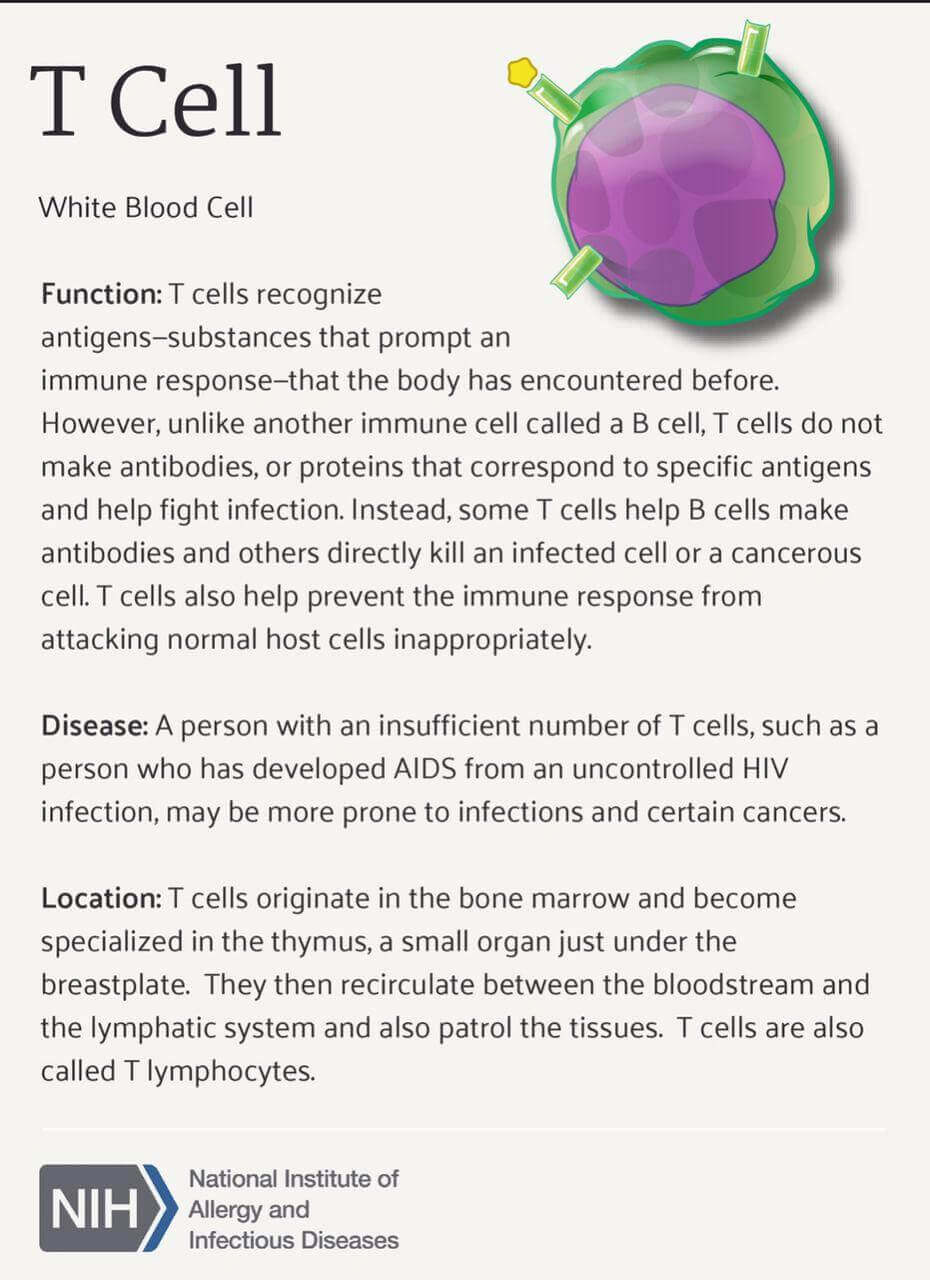
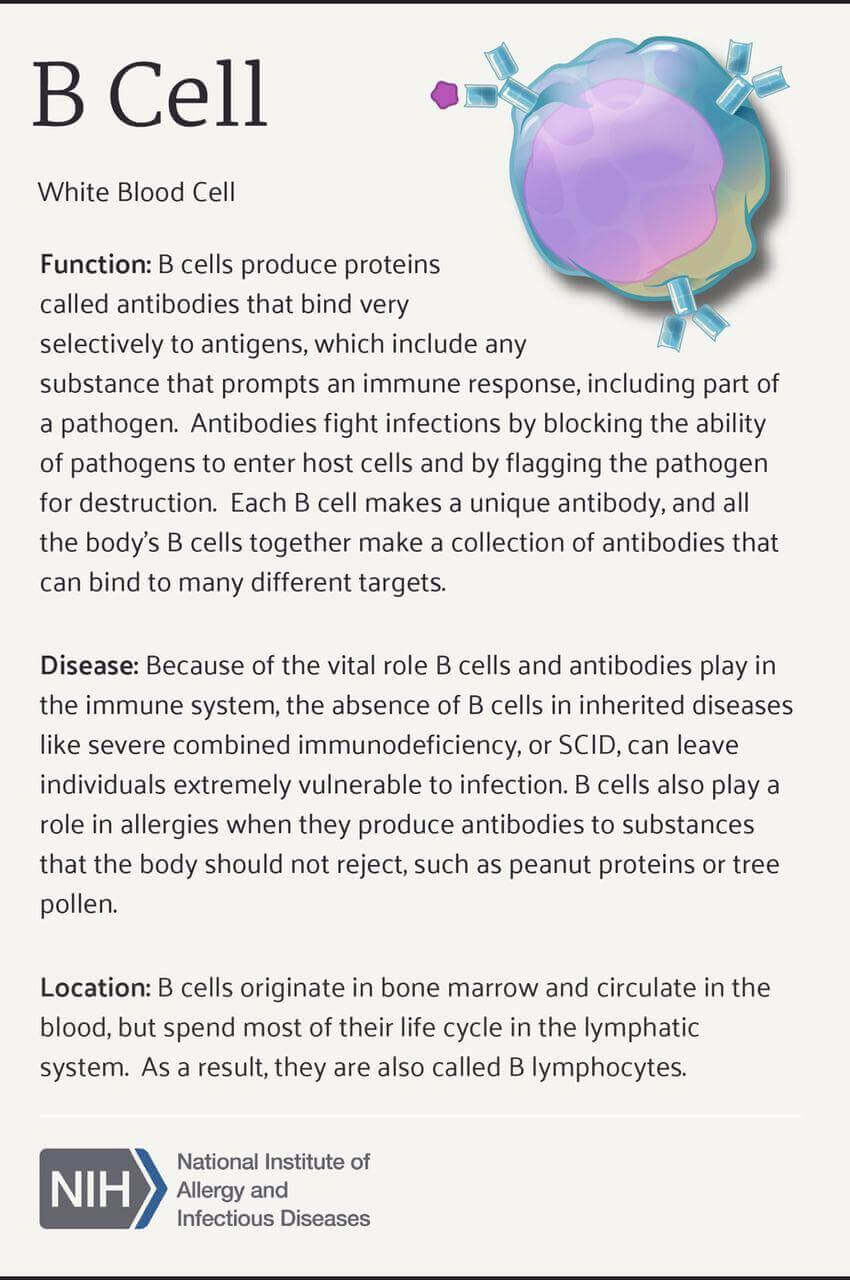
How does the Immune System deal with Coronavirus?
- As with most viral infections, the body’s temperature rises in an effort to kill off the virus.
- Additionally, WBCs pursue the infection: some ingest & destroy infected cells, others create antibodies that prevent virions from infecting host cells, & still, others make chemicals that are toxic to infected cells.
- But different people’s immune systems respond differently.
- Like the flu or common cold, covid-19 is easy to get over if it infects only the upper respiratory tract—everything above the vocal cords.
- It can lead to complications like bronchitis or pneumonia if it takes hold further down.
- If the virus can infect the lower airway (as its close cousin, SARS, does more aggressively), it creates havoc in the lungs, making it hard to breathe.
- Anything that weakens the immune system—even heavy drinking, missed meals, or a lack of sleep—could encourage a more severe infection.
How does immune response make people Sick?
- Infection is a race between the virus & the immune system.
- The outcome of that race depends on where it starts: the milder the initial dose, the more chance the immune system has of overcoming the infection before the virus multiplies out of control.
- If an infection sufficiently damages the lungs, they will be unable to deliver oxygen to the rest of the body, & a patient will require a ventilator.
- It is estimated that this happens to between 3% & 17% per cent of all covid-19 patients.
- Secondary infections that take advantage of weakened immune systems are another major cause of death.
- Sometimes it is the body’s response that is most damaging.
- Fevers are intended to cook the virus to death, but prolonged fevers also degrade the body’s own proteins.
Cytokine storm
- The immune system creates small proteins called cytokines & chemokins (small cytokines, or signalling proteins secreted by cells) that are meant to hinder the virus’s ability to replicate.
- They alert the immune system to send an array of different kinds of cells that destroy viral particles.
- Overzealous production of these (cytokine storm), can result in deadly hyper-inflammation.
- The resulting lung inflammation & fluid buildup can lead to respiratory distress & can be contaminated by a secondary bacterial pneumonia — often enhancing the mortality in patients.
- It is in expelling this fluid that a dry cough, characteristic of the coronavirus infection, begins.
- As more airsacs are infected, the breathlessness is aggravted.
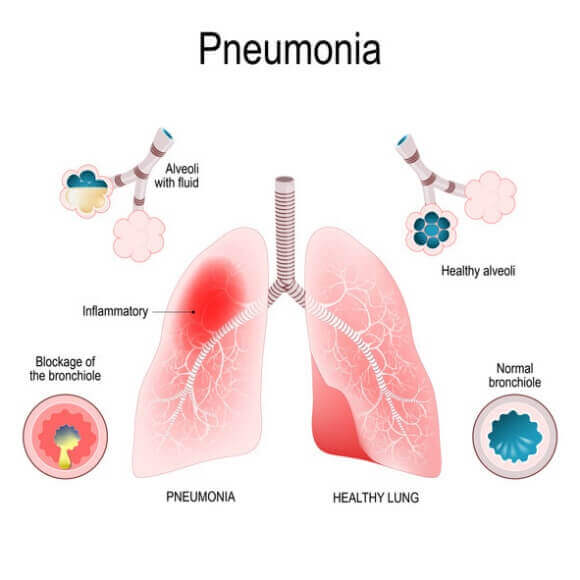
- In the nose & upper regions of the respiratory system, this inflammation produces mucus & a runny nose to trap viral particles & prevent their ingress.
- This also triggers sneezes to expel them.
- When the sinuses are inflamed we get a headache & the general stuffiness that we associate with a cold.
- When a gland called the hypothalamus is inflamed, it results in a fever.
- Cytokine storms are not exclusive to coronavirus patients.
- It is seen as a likely major cause of mortality in the 1918-20 “Spanish flu” — which killed more than 50 million people worldwide — & the H1N1 “swine flu” & H5N1 “bird flu” of recent years.
Why are some infections mild & others life-threatening?
- Depending on the degree of infection in the lungs, the inflammation & the fluid build-up can lead to pneumonia.
- A patient will require hospitalisation to treat the breathlessness & ventilator support to artificially provide oxygen if the condition worsens.
- However, massive levels of cytokines can cause extensive lung damage & a condition called Acute Respiratory Distress Syndrome.
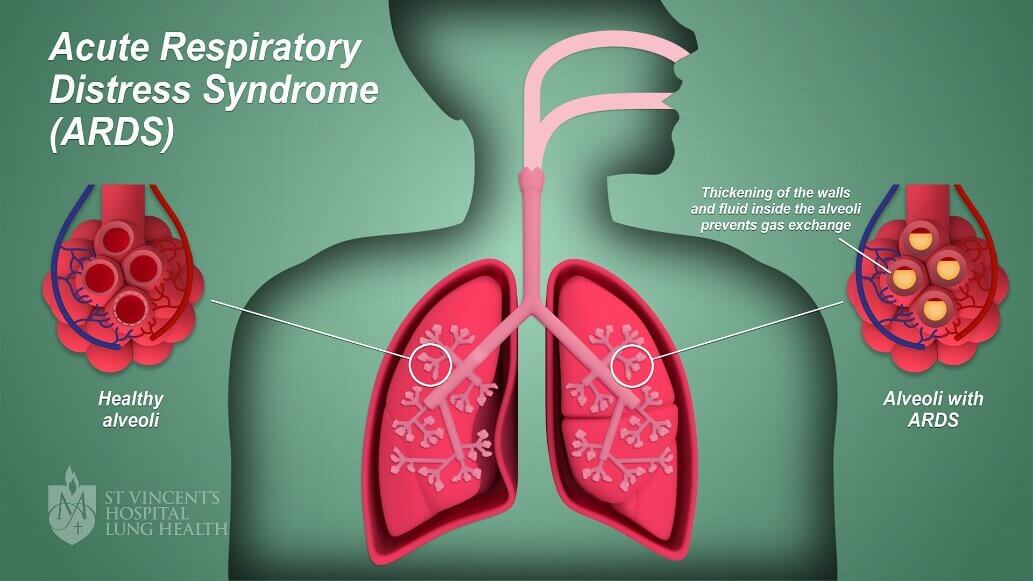
- The unsustainable cytokine storm can cause organ damage far beyond the lungs & spread to the kidneys as well as the heart.
- The elderly, especially those with existing conditions such as diabetes & cardiovascular disease, already have an inherent malfunctioning in the immune system.
- In many ways, it is the reaction of the body is trying to combat the virus that ends up being suicidal.
- The different kinds of drugs, whether it is hydroxychloroquine or anti-HIV drugs, deployed to treat serious COVID-19 infection, also work in some way to moderate the immune system’s aggressive defence.
- Mortality statistics globally suggest that men are twice more likely than women to succumb to a COVID-19 infection.
- This follows from studies that show women, on average, have a better-regulated immune response than men in pathogenic infections.
- Estrogen is said to be an immune-system modulator & the ability to deal with a pregnancy — which also begins as a foreign body growing within — primes women to better deal with infections.
- Given that children’s immunity systems are still maturing & learning to adapt to a galaxy of infectious agents, why they seem to be relatively better protected from severe COVID-19 disease is not known.
What is Herd Immunity?
- Herd immunity is a stage of an epidemic in which some members of a population group remain protected from infection because a majority of those around them have already developed immunity, either through vaccination or because they have been infected earlier.
- Everyone in the population group does not need to get infected before the epidemic is over.
- Once a certain proportion of the population gets infected, & thus builds immunity against the disease, the epidemic begins to slow down & eventually stop.
- The problem is no one clearly knows what percentage of the population needs to be infected before herd immunity kicks in.




